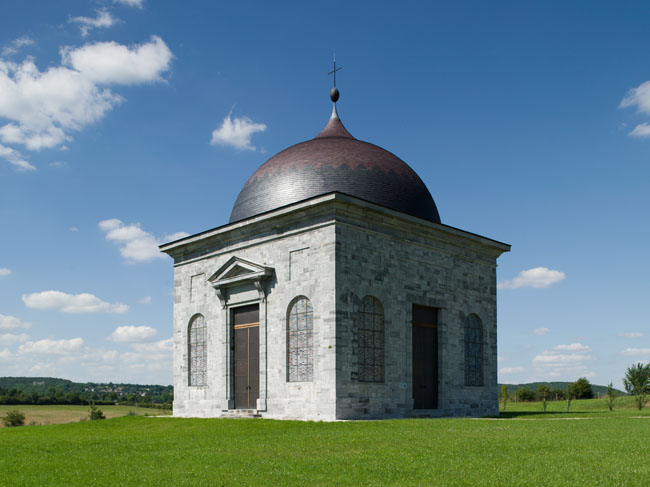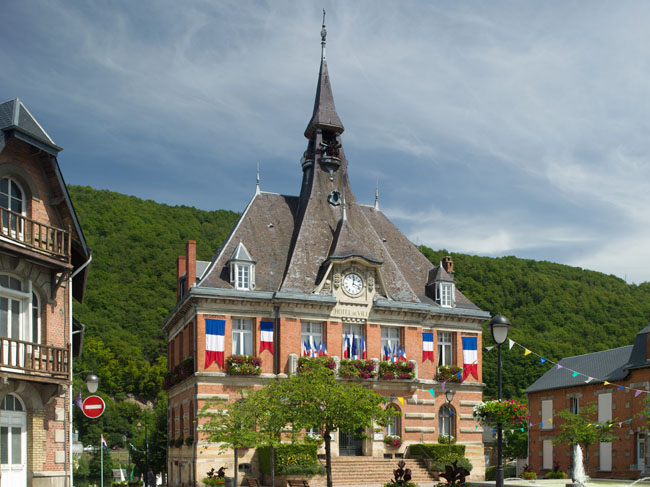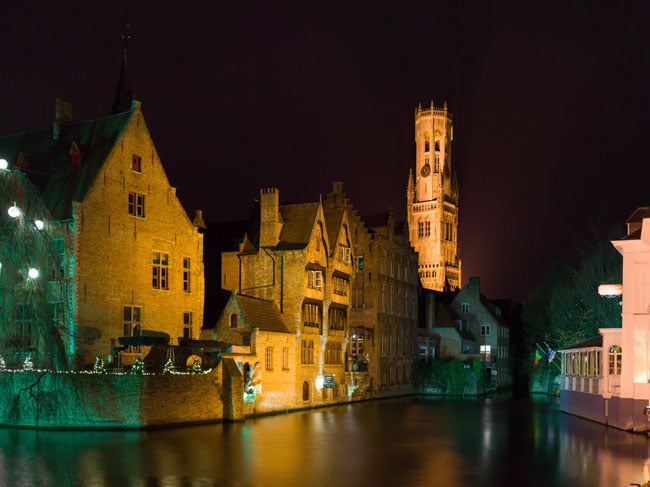This article is more than 1 year old
Snapper's decisions: Whatever happened to real photography?
Automatic for the People
In the frame
Figs.6 and 7 show pictures that can be blown up to about two metres across before they go soft. These images are only 22 Megapixels, but they are not marketing pixels, and the images have come though a properly engineered lens, so they are rich in information. Fig. 8 shows a time exposure in which noise is not an issue.
For the full resolution version of the images below, click click here (27MB).

Fig.6. La Chapelle de Walcourt not long after almost a million Euro was spent on a stunning restoration. This was taken with only 22 Megapixels, but because the sensor is huge the pixel count means something. A shift lens (Sekor 50mm) was used to get the perspective correct and as the sun was merciless a polarising filter was used to take some of the glare away. A blond beer was needed to cool the photographer
Cameras with small sensors tend to have larger depth of field making it harder to use selective focusing to lead the viewer’s eye to the subject of interest. It is difficult to be specific because small sensors have physically smaller lenses that may be economic to make with larger apertures, ameliorating the problem somewhat. Nevertheless, subjectively small sensor cameras do seem to produce images in which everything is in focus. So you never know if their bokeh is OK.
Early mass-market cameras such as the famous Kodak Brownie used 120 film, which was 70mm wide but had no sprocket holes, so most of the film area could be used. As film resolution and lens quality increased, the film width was halved to use 35mm film whose dimensions were identical to cinema film.
However, cinema film ran vertically and each frame was four perforations high. In still cameras, the film ran horizontally so the frame was significantly larger at 8 perforations wide (24 x 36mm). Whilst cinema film must have sprocket holes, they are not necessary in still photography. Without holes, a 35mm film frame could have been 30 x 45mm, but the opportunity was lost.

Fig.7. The town hall in Heybes on the Meuse. Another shift lens and polariser shot. Another beer.
120 film then continued in use in medium format cameras aimed at the professional market such as the Hasselblad, Mamiya and Bronica, which were so called because the image size was larger than that of 35mm but smaller than that of plate cameras. Image sizes of 60 x 45, 60 x 60 and 70 x 60 were popular. These medium format system cameras in many ways defined the golden age of photography by being able to photograph practically anything with startling quality.
Hasselblad and Zeiss, who made their lenses, had a prolonged performance war with Mamiya to the benefit of all. Back then, I had pushed 35mm as far as it would go and was tempted by medium format, but for various reasons and diversions there would be a delay before I got there.
In order to make the viewfinder work, 35mm SLRs universally had focal plane shutters consisting of two curtains immediately in front of the film. The first curtain would travel across the frame, admitting light, then the second would travel, shutting the light off. At fast shutter speeds, the second curtain would set off before the first had completed its journey, meaning that a moving slit of light traversed the film. That was fine for naturally illuminated shots, but no good for flash where the light is instantaneous. For fill-in flash – that softens shadows in daylight – it might be necessary to use the flash along with a short shutter time.

Fig.8 Time exposure taken in Bruges showing freedom from noise that characterises large sensors. Thick socks were worn for this shot
Medium format cameras got around it by putting shutters in the lens. In the classic Hasselblad, there is a pair of barn doors behind the mirror that normally cover up the film. In order that the viewfinder can work, the shutter in the lens must be open. When the exposure sequence is triggered, the lens shutter closes, the mirror goes up and the barn doors open. The lens shutter then opens for the selected time to expose the film and then closes. The barn doors close, the mirror descends and the lens shutter opens again. All lenses used with the Hasselblad must contain shutters.
Mamiya went a stage further by having a focal plane shutter for use with non-shuttered lenses as well as allowing shuttered lenses to be used, when the focal plane shutter simply opens for longer so the exposure is determined by the shutter in the lens. Mamiya’s motor wind would advance the film and wind up the focal plane shutter. The shutter lenses are electric and are connected to the motor wind by a short cable so that it can wind up the lens shutter as well.
